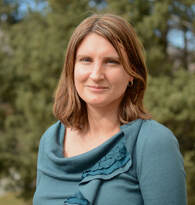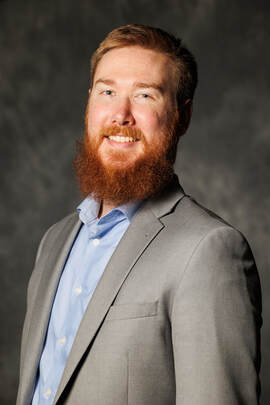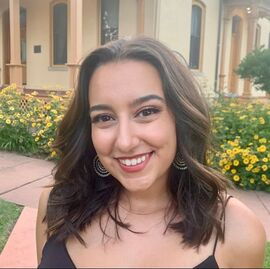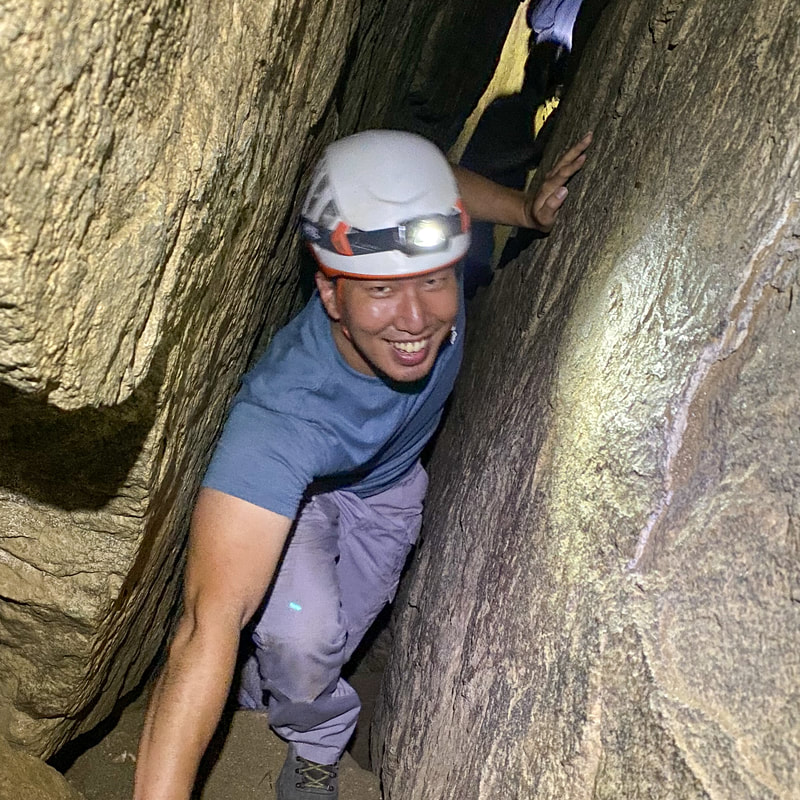Dr. Svitlana PylypenkoSvitlana is an Associate Professor in the Chemistry Department at the Colorado School of Mines. She is also involved in the interdisciplinary Materials Science Program at Mines and holds a joint appointment at the National Renewable Energy Laboratory (NREL). Prior to joining the Chemistry Department, Svitlana was an Assistant Research faculty in the Department of Materials and Metallurgical Engineering. Svitlana received her B.S. and M.S in Chemistry and Chemical Engineering from the National Technical University of Ukraine and Ph.D. in Chemistry from the University of New Mexico. Svitlana’s group at Mines investigates surfaces and interfaces of applied materials with an emphasis on building relationships between surface composition and structure, material properties, and their performance, with the eventual goal to design the next generation of materials based on earth abundant elements which provide high efficiency at a fraction of the cost of PGM-based materials. Research focuses on multi-technique, multiscale analysis, and in situ and in operando studies bridging surface analysis, surface science, and catalysis. Svitlana is on the AVS Board of Directors and has previously served as a board member of the AVS Applied Surface Science Division, Rocky Mountain Chapter of AVS, ECS Physical and Analytical Electrochemistry Division, and co-chaired AVS-sponsored Surface Analysis Symposium. She serves as the chair of AVS Educational Materials and Outreach Committee, is involved in the AVS Science Educators Workshop, and is a faculty adviser of the Colorado School of Mines AVS student chapter (MAVS).
|
Jayson FosterJayson started his Ph.D. in Applied Chemistry program in Fall 2019. Jayson received his B.S. in Chemistry from Utah Tech University in St. George, Utah. His current research interests revolve around using X-ray Photoelectron Spectroscopy to answer questions about a material’s surface. He has worked on many different types of materials with an emphasis on polymer electrolyte membrane fuel cells and electrolyzers to analyze various fabrication methods effects on the catalyst-ionomer interface at the surface, and to relate the surface chemistry properties to electrochemical performance metrics. Jayson has continued Mike’s development of in situ XPS experiments at near-ambient conditions to probe the catalyst-ionomer interface evolution under humidification. He hopes to eventually characterize every element with XPS (except for H and He of course!). Jayson enjoys listening to Taylor Swift, playing with his two cats, and making fried food for friends.
|
Genevieve StelmacovichGenevieve started her Ph.D. in Applied Chemistry in Fall 2020. In 2018, she received her B.S in Chemistry from Park University in Parkville, Missouri. Her undergraduate research involved optimization and method development for electrochemical analysis using carbon screen printed electrodes for anodic stripping voltammetry. Between her undergraduate career and her start at Colorado School of Mines, she worked in industry conducting trace analysis of pesticides on agricultural samples. Genevieve’s current research focus is the characterization of surfaces and interfaces of proton exchange membrane water electrolyzers. Specifically, she investigates porous transport layer and catalyst layer interactions using Time of Flight Secondary Ion Mass Spectrometry (ToF SIMS), electron microscopy, and tomography. Outside of the lab, Genevieve loves travelling, reading, and spending time with friends.
|
Matthew CoatsMatthew started his Ph.D. in Applied Chemistry at Mines in Fall 2021. In 2018, he received his B.S. in Chemical Engineering from University of California Davis. During his undergraduate studies, he worked on using machine learning to predict the concentration of organic carbon in atmospheric aerosol samples using multivariate analysis from FTIR spectra. At the end of Fall 2021, he finished his M.S. in Chemistry from San Francisco State University. His thesis focused on synthesizing and characterizing near crack-free anatase TiO2 thin films with a preferred c-axis orientation to be used as a charge transport layer to a nickel-based catalyst to catalyze the oxygen evolution reaction under photoelectrochemical conditions. Matthew’s current research at Mines focuses on characterizing the heterogenous degradation of the cathode catalyst layer of polymer electrolyte membrane fuel cells. Specifically, he uses transmission electron microscopy and X-ray spectroscopy techniques to analyze the degradation phenomena. Outside of lab, he enjoys travelling, landscape photography, and gardening.
|
Jaehyun SuhJaehyun (Jae) started his Ph.D. in Materials Science at Mines in Fall 2021. Before that, he studied Materials Science and Engineering at Sungkyunkwan University (B.S.) and at the University of Washington (M.S.). At Sungkyunkwan University, Jae participated in synthesizing ZnO nano-particulates for a gas-sensing purpose at room temperature. At the University of Washington, Jae made vdW heterostructures with his colleagues and observed unconventional transport and magnetic phenomena that stem from the interaction between layers (graphene and chromium triiodide). These surface-and-interface-related experiences, along with the interest and experience in characterization techniques, made Jae want to pursue research in the Surfaces of Applied Materials group. In the SAM group, Jae focuses on the XPS and TEM analysis of the catalyst-ionomer interface in the proton exchange membrane fuel cell. Especially, he will be working on a novel catalyst structure where there is little-to-zero ionomer. He dreams about his research one day possibly positively contributing to the nature and environment. Outside the lab, Jae enjoys going to the gym, going on outdoor adventures, traveling places, taking photos, and learning about the untrodden part of the world. Jaehyun is originally from South Korea and goes by Jaehyun, Sean, or simply, Jae.
|
Lonneke van EijkLonneke is an Applied Chemistry Ph.D. student who started in the Pylypenko group in Fall 2022. She received her B.S. in Chemistry from Northern State University in Aberdeen, South Dakota. During her undergraduate research, she was working to develop a lab for a Physical Chemistry class. This research included developing an ICP-OES lab that shows matrix effects on analyte detection. Her research at Mines focuses on characterization of polymer electrolyte membrane water electrolyzer (PEMWE) catalyst layers and porous transport layers (PTLs). Lonneke uses a variety of techniques including scanning electron microscopy (SEM), x-ray photoelectron spectroscopy (XPS), and time of flight secondary ion mass spectrometry (ToF SIMS) to study morphology and structure of these PTLs. She is an active member of the Mines AVS student chapter (MAVS), serving as the Vice-Chair. When she is not at work, she likes to play soccer, go on hikes, play board games with friends, and loves traveling.
|
Current Undergraduate Students
Max Shepherd
|
Emma Carstens
|
Dylan Kuiken
|
Past Group Members:
Graduate Students
Margaret Fitzgerald ( PhD, Materials Science, 2022)
Thesis Title:"Probing catalyst-support interactions: Effect of Nitrogen Defects on Pt Nanoparticle Dispersion and Stability Through Electron Microscopy Paired with Machine Learning Image Processing"
Current Position: CoRE Rotation Engineer at Lam Research
Contact: LinkedIn
Samantha Medina (PhD, Materials Science, 2022)
Thesis Title:"Microscopic and Spectroscopic Characterization of Fuel Cell Catalyst Layer Materials and Interfaces"
Current Position: Post-doctoral researcher at National Renewable Energy Laboratory (NREL)
Contact: LinkedIn
Sarah Zaccarine (PhD, Applied Chemistry, 2022)
Thesis Title:"Multi-Scale Multi-Technique Characterization of PEM Fuel Cell and Elecrolyzer Catalysts and Catalyst Layers"
Current Position: Staff Scientist at Physical Electronics
Contact: LinkedIn
Natalie Seitzman (PhD, Materials Science, 2021)
Thesis Title: "Probing catalyst-support interactions: Effect of Nitrogen Defects on Pt Nanoparticle Dispersion and Stability Through Electron Microscopy Paired with Machine Learning Image Processing"
Current Position: Energy Policy Advocate, Southern California Public Power Authority
Contact: LinkedIn
Michael Dzara (PhD, Materials Science, 2020)
Thesis Title: "X-ray Photoelectron Spectroscopy Investigation of Surfaces and Interfaces in Fuel Cell Applications"
Current Position: Staff researcher at National Renewable Energy Laboratory (NREL)
Contact: LinkedIn
Manju Pharkavi Murugesu (MS, Petroleum Engineering, 2019)
Thesis Title: "Chemistry and Morphology of Rocks: Implications for CO2 Storage Capacity"
Current Position: PhD student, Energy Resources Engineering at Stanford University as a Knight-Hennessy Scholar
Contact: LinkedIn
Samuel Gage (PhD, Applied Chemistry, 2018)
Thesis Title: "Controlling Functionality and Making Structure-Property Correlations in Nanostructured Metal Nitride Materials"
Current Position: Decarbonization Consultant and Team Lead at Energetics
Contact: LinkedIn
Sarah Shulda (PhD, Applied Chemistry, 2017)
Thesis Title: "Spectroscopic Characterization of Extended Surface Catalysts"
Current Position: Staff researcher at National Renewable Energy Laboratory (NREL).
Contact: LinkedIn
Matthew Strand (MS, Materials Science, 2017)
Thesis Title: "Development of N-doped carbon nano materials with controlled shape and composition for fundamental studies of electrocatalytic systems based on PGM and PGM-free catalysts"
Contact: LinkedIn
Post Docs
Chilan Ngo (2015-2018)
Research Focus: Electron Microscopy, Atom Probe Tomography
Current Position: PTD Process Engineer at Intel Corporation
Contact: LinkedIn
Jason Christ (2014-2015)
Research Focus: Electrochemistry
Current Position: Research Sceintist at Moses Lake Industries- Portland R&D
Contact: LinkedIn
Undergraduate Students
Sara Kim (2020, 2023)
Isabella Lambardia (2021, 2022)
Hank Rice (2019, 2020)
Denali Ibbotson (2019, 2020)
Olivia Bird (2017, 2020)
Krystal Baucum (2018, 2019)
Isabella Rios (2018, 2019)
Christopher Sands (2018, 2019)
Polina Mareyassich (2017, 2018)
Joshua Pearson (2017)
Jaime Hagen (2016, 2017)
Matt Curtis (2016, 2017)
Tadeuz Nitka (2015, 2016)
Austin White (2016)
Tim Batson (2015)
Margaret Fitzgerald ( PhD, Materials Science, 2022)
Thesis Title:"Probing catalyst-support interactions: Effect of Nitrogen Defects on Pt Nanoparticle Dispersion and Stability Through Electron Microscopy Paired with Machine Learning Image Processing"
Current Position: CoRE Rotation Engineer at Lam Research
Contact: LinkedIn
Samantha Medina (PhD, Materials Science, 2022)
Thesis Title:"Microscopic and Spectroscopic Characterization of Fuel Cell Catalyst Layer Materials and Interfaces"
Current Position: Post-doctoral researcher at National Renewable Energy Laboratory (NREL)
Contact: LinkedIn
Sarah Zaccarine (PhD, Applied Chemistry, 2022)
Thesis Title:"Multi-Scale Multi-Technique Characterization of PEM Fuel Cell and Elecrolyzer Catalysts and Catalyst Layers"
Current Position: Staff Scientist at Physical Electronics
Contact: LinkedIn
Natalie Seitzman (PhD, Materials Science, 2021)
Thesis Title: "Probing catalyst-support interactions: Effect of Nitrogen Defects on Pt Nanoparticle Dispersion and Stability Through Electron Microscopy Paired with Machine Learning Image Processing"
Current Position: Energy Policy Advocate, Southern California Public Power Authority
Contact: LinkedIn
Michael Dzara (PhD, Materials Science, 2020)
Thesis Title: "X-ray Photoelectron Spectroscopy Investigation of Surfaces and Interfaces in Fuel Cell Applications"
Current Position: Staff researcher at National Renewable Energy Laboratory (NREL)
Contact: LinkedIn
Manju Pharkavi Murugesu (MS, Petroleum Engineering, 2019)
Thesis Title: "Chemistry and Morphology of Rocks: Implications for CO2 Storage Capacity"
Current Position: PhD student, Energy Resources Engineering at Stanford University as a Knight-Hennessy Scholar
Contact: LinkedIn
Samuel Gage (PhD, Applied Chemistry, 2018)
Thesis Title: "Controlling Functionality and Making Structure-Property Correlations in Nanostructured Metal Nitride Materials"
Current Position: Decarbonization Consultant and Team Lead at Energetics
Contact: LinkedIn
Sarah Shulda (PhD, Applied Chemistry, 2017)
Thesis Title: "Spectroscopic Characterization of Extended Surface Catalysts"
Current Position: Staff researcher at National Renewable Energy Laboratory (NREL).
Contact: LinkedIn
Matthew Strand (MS, Materials Science, 2017)
Thesis Title: "Development of N-doped carbon nano materials with controlled shape and composition for fundamental studies of electrocatalytic systems based on PGM and PGM-free catalysts"
Contact: LinkedIn
Post Docs
Chilan Ngo (2015-2018)
Research Focus: Electron Microscopy, Atom Probe Tomography
Current Position: PTD Process Engineer at Intel Corporation
Contact: LinkedIn
Jason Christ (2014-2015)
Research Focus: Electrochemistry
Current Position: Research Sceintist at Moses Lake Industries- Portland R&D
Contact: LinkedIn
Undergraduate Students
Sara Kim (2020, 2023)
Isabella Lambardia (2021, 2022)
Hank Rice (2019, 2020)
Denali Ibbotson (2019, 2020)
Olivia Bird (2017, 2020)
Krystal Baucum (2018, 2019)
Isabella Rios (2018, 2019)
Christopher Sands (2018, 2019)
Polina Mareyassich (2017, 2018)
Joshua Pearson (2017)
Jaime Hagen (2016, 2017)
Matt Curtis (2016, 2017)
Tadeuz Nitka (2015, 2016)
Austin White (2016)
Tim Batson (2015)
Have any questions for our team? Drop us a line!







